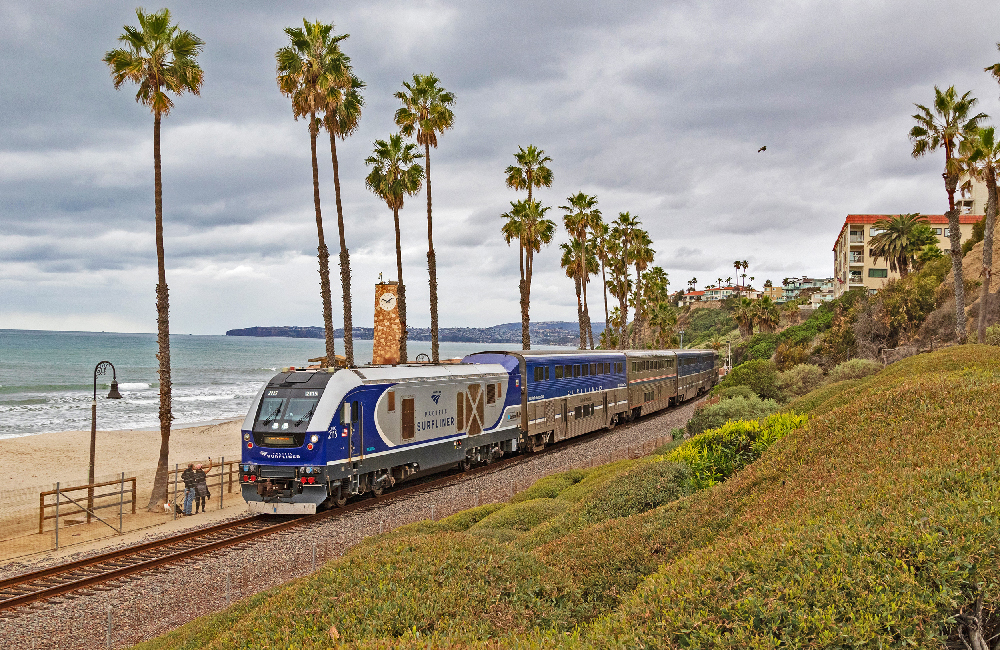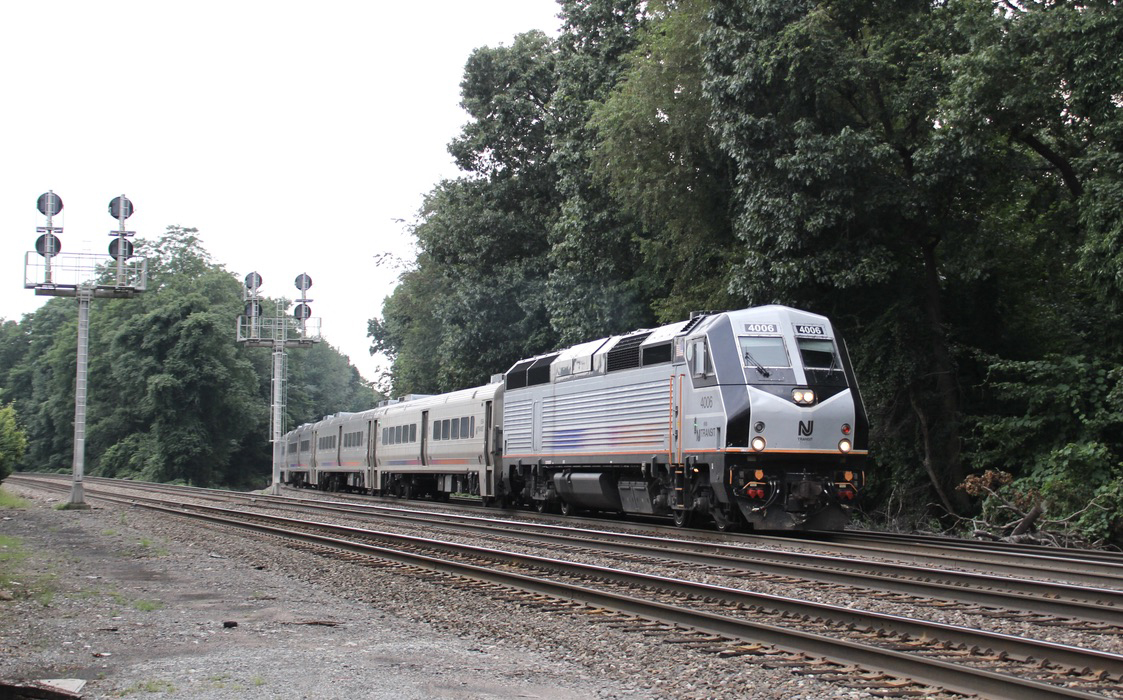
LOS ANGELES – Amtrak’s Pacific Surfliner trains will now operate on renewable diesel fuel, the LOSSAN rail agency, which manages the service, announced Oct. 3. Renewable diesel is chemically similar to fossil diesel but made from renewable raw materials such as used cooking oil, instead of crude oil. The Pacific Surfliner operates between San Diego, Los Angeles and San Luis Obispo, Calif. It is the busiest state-supported intercity passenger rail route in the U.S.
Compared to fossil diesel, renewable diesel significantly reduces greenhouse gas emissions by an estimated 63% throughout its lifecycle, the agency says. The adoption of renewable diesel is the result of a collaborative effort that includes the California Department of Transportation (Caltrans), Amtrak, the Capitol Corridor Joint Powers Authority, San Joaquin Joint Powers Authority, and other partners.
The Pacific Surfliner currently operates with Amtrak’s Siemens Charger locomotives, the first passenger locomotive to receive the stringent Tier IV emissions certification from the Environmental Protection Agency.
The Los Angeles – San Diego – San Luis Obispo (LOSSAN) Rail Corridor Agency is a joint powers authority overseeing the management of the Pacific Surfliner service. For more information, visit Lossan.org.














Fossil oil and used cooking oil are both hydrocarbons, so it’s a stretch to claim cooking oil releases 63% less greenhouse gas when combusted in an internal combustion engine. The key part of that sentence is “throughout its life cycle “, suggesting the savings is simply because cooking oil isn’t pumped out of the ground.
How much will this fuel cost and how much would it cost without a public subsidy?
Uh, how is diesel fuel “renewable”? Do they recover the engine’s exhaust and somehow turn it back into a usable liquid?
Well done Amtrak. Of course, we hope the rest will follow.
Dr. Güntürk Üstün
Yes, but can it make the trains run on time or just plain run? All this enviro stuff is of no use if people stop using the trains because they are unreliable as they are now.
Yes, but now the enviros can chomp down their fast food fries without guilt. Actually, it could be considered virtue-signalling.
All part of California’s plan and and progtam to go green and be eco-friendly but if they really want to have clean air and a clean environment, its time to clamp down on highway building and expansion and limit the number of cars that each person or family has. The damage was done many years ago when Southern California foolishly got rid of their Pacific Electric trainsit system instead of modernizing the company and expansion and building of new lines into new surburban developments. Instead California got caught up with the automobile craze and mania and built highways all over the area which only increased more car usage and ownership and made car dealships and auto manufacturers more happy as they counted the millions of dollars poured into their coffers and pockets all at the expense of California’s air and enviroment. When you see Los Angles buried and covered in smog thats is the result of poor planning and careless regard for the population living there and in other cities because of the never ending love affair and adoration of the automobile. California’s well meaning attempts to clean up the air and envirnoment are a great step forward but there has been too many years of neglect and disregard by not investing wisely in rail and public transit to move the vast numbers of people living and moving to California.
Joseph C. Markfelder
Good post Joseph. The EV advocates completely miss the point, the point you made (above). The environmental impact of cars is proportional to the number of cars driven the number of miles. Whether an ICE or an EV is very much a secondary factor. …. and I’m not at all convinced in favor of the EV.